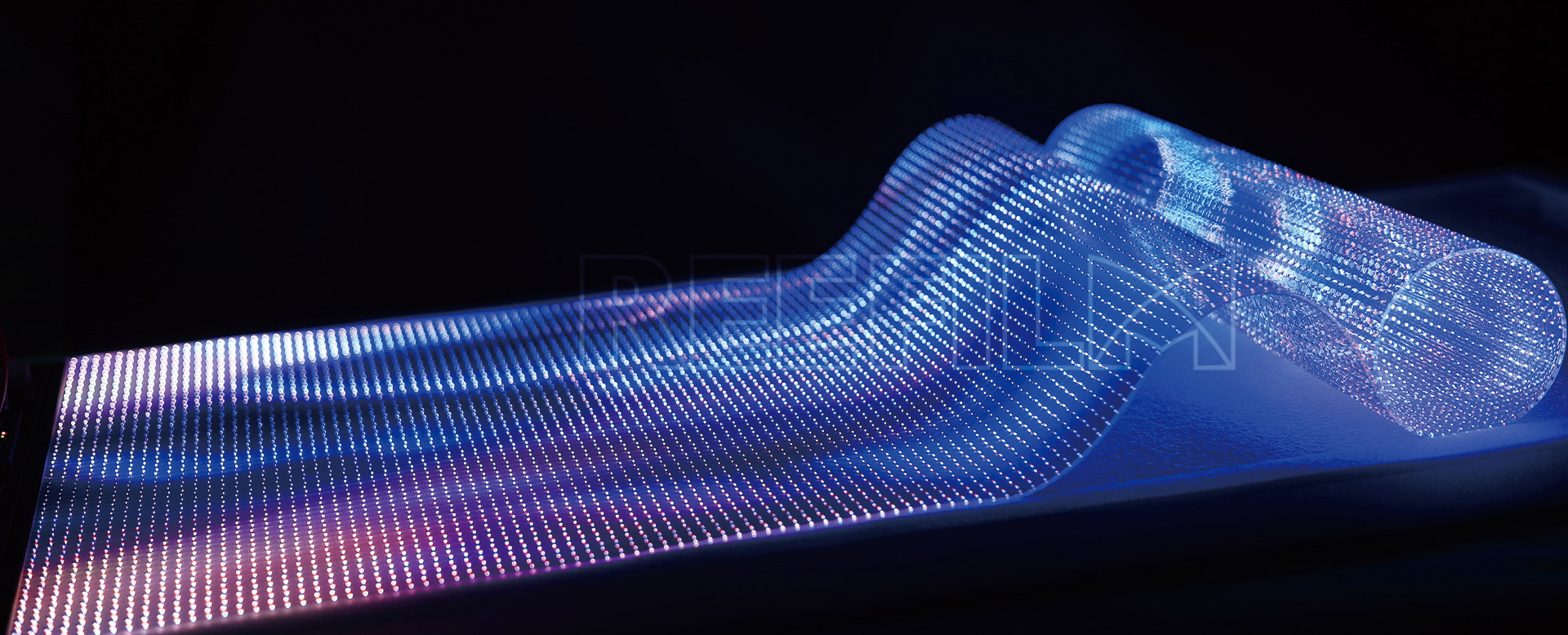
The Transparent Led Display Board represents a revolutionary advancement in digital display technology, combining high visibility with architectural integration. Unlike traditional LED screens that block light and views, Transparent Led Displays maintain 50-85% transparency while delivering vibrant digital content. This innovative solution is transforming retail, corporate, and public spaces by blending digital media with physical environments.
Transparent LED displays achieve remarkable transparency levels ranging from 50% to 85%, with premium models reaching up to 90% transparency. This is accomplished through specialized LED chip packaging and sparse pixel arrangements, typically between P3.9 to P10mm pitch. The transparent conductive materials used in these displays maintain structural integrity while allowing natural light transmission.
These displays deliver exceptional brightness levels of 5,000 to 8,000 nits, ensuring visibility even in direct sunlight. The contrast ratio typically exceeds 10,000:1, with advanced models achieving up to 20,000:1. This performance is maintained while consuming 30-50% less power than conventional LED displays of comparable size.
Transparent LED technology provides horizontal and vertical viewing angles of 160°-170° without color distortion or brightness degradation. The displays maintain consistent performance across this wide viewing range due to advanced LED chip design and optical diffusion layers that ensure uniform light distribution.
With thickness typically under 10mm and weight ranging from 8-15kg/m², transparent LED displays impose minimal structural load. This makes them ideal for glass curtain walls and window installations where traditional displays would be impractical. The modular design allows for custom sizes with minimal bezels (2-5mm between modules).
These displays cover ≥110% NTSC color gamut with 16.7 million color options. The color temperature is adjustable from 3000K to 10000K, allowing perfect matching with ambient lighting conditions. Refresh rates exceed 3840Hz, eliminating flicker and ensuring smooth video playback at 60-120fps.
Transparent LED displays are revolutionizing retail environments by transforming storefront windows into interactive digital canvases. Major brands utilize these displays to showcase products while maintaining visibility into the store, achieving 30-70% higher customer engagement compared to traditional signage. The technology enables dynamic pricing displays, augmented reality integrations, and real-time inventory visualization.
Modern buildings incorporate transparent LED displays into glass facades and curtain walls, creating "smart buildings" that can display information while maintaining natural light transmission. These installations typically cover 30-70% of building surfaces, serving as both functional displays and architectural elements. The technology enables dynamic building aesthetics that change throughout the day.
Cultural institutions employ transparent displays to overlay digital information on physical artifacts without obstructing views. The 500-2000cd/m² brightness range allows perfect visibility in controlled lighting conditions, while the high transparency preserves the integrity of displayed objects. Interactive versions enable visitors to access additional content through touch or motion sensors.
Airports and train stations utilize transparent LED boards for wayfinding and flight information displays. The technology provides 24/7 operation with 100,000+ hour LED lifespan, ensuring reliable performance in high-traffic environments. The displays maintain visibility through glass partitions while allowing natural light to permeate waiting areas.
Office buildings and hotels install transparent displays in lobbies and conference rooms for branding and information sharing. The IP65-rated versions are suitable for indoor/outdoor transitional spaces, resisting dust and moisture while maintaining elegant aesthetics. Corporate applications often integrate these displays with building automation systems for dynamic environmental control interfaces.
Maintain display clarity by cleaning the surface every 2-4 weeks using a microfiber cloth and isopropyl alcohol (70% concentration). Avoid ammonia-based cleaners that can damage anti-reflective coatings. For outdoor installations, implement a quarterly professional cleaning regimen to remove environmental buildup.
Ensure operating conditions remain within specified parameters: temperature -20°C to 50°C, humidity 10%-90% RH (non-condensing). Install environmental sensors to monitor conditions and trigger alerts when parameters approach limits. For extreme climates, consider supplemental heating/cooling systems with ±5°C temperature control.
Utilize surge protectors with ≤1ns response time and 40kA surge current capacity. Implement scheduled power cycles (full shutdown every 200-300 hours of continuous operation) to refresh system components. Monitor power consumption patterns to detect potential issues early.
Conduct monthly visual inspections for dead pixels or color inconsistencies. Use calibration software to maintain ΔE<3 color accuracy across the display surface. For modular systems, keep spare modules (2-5% of total) for immediate replacement, reducing downtime.
Regularly update control software and firmware to maintain compatibility and security. Schedule updates during low-usage periods, allowing 15-30 minutes for complete installation and verification. Maintain backup configurations to enable rapid recovery in case of system failures.
For suspended or large-format installations, conduct bi-annual structural inspections. Verify mounting hardware torque specifications (typically 5-10Nm for most systems) and check for material fatigue. Document inspection results to track long-term performance trends.
Professional Note: Always consult manufacturer-specific maintenance guidelines, as technical specifications and procedures may vary between transparent LED display models and brands. Professional installation and maintenance teams should handle complex repairs and calibrations.
Previous: Transparent LED Film Screen
Next: Soft Led Screen